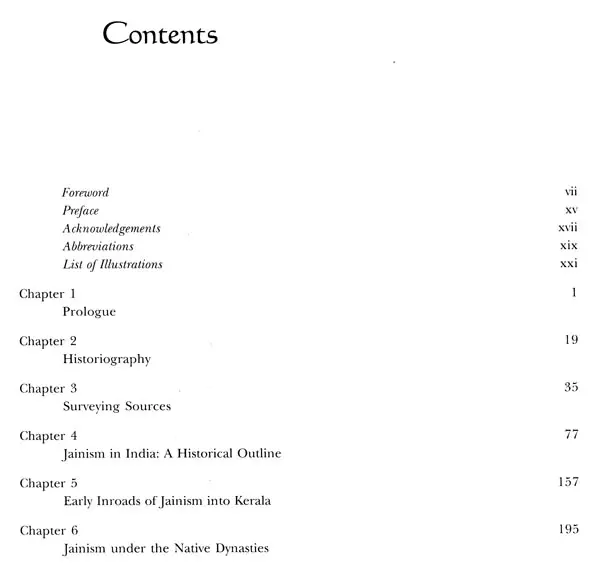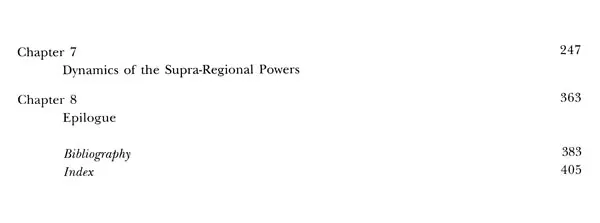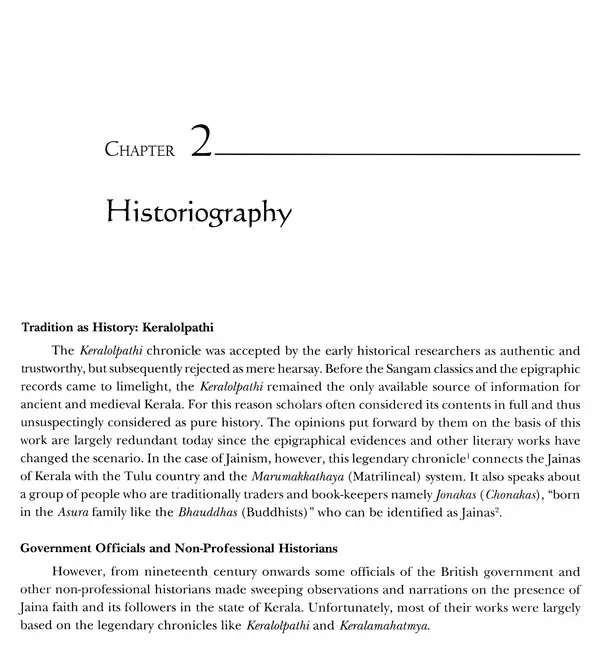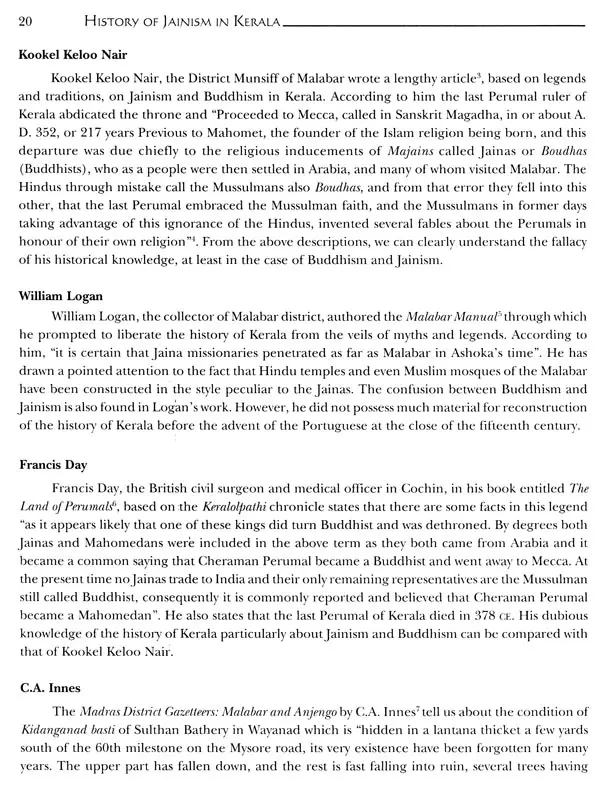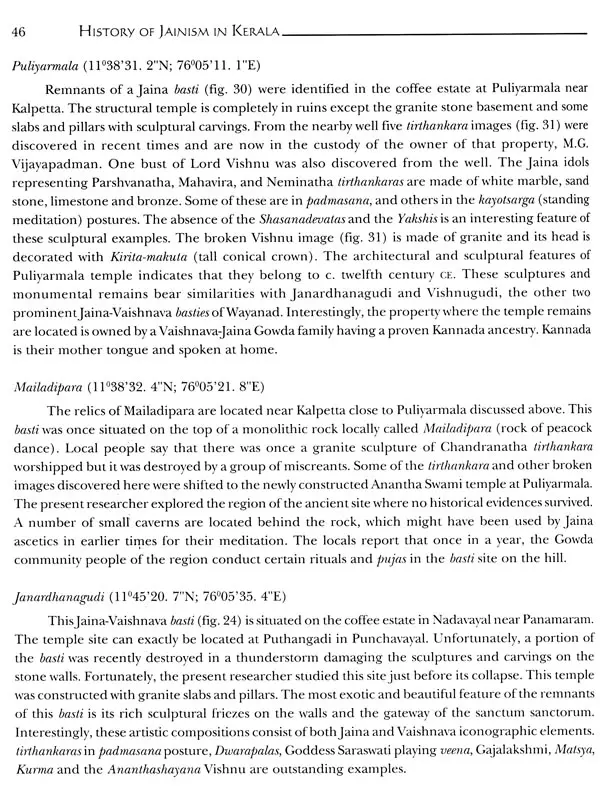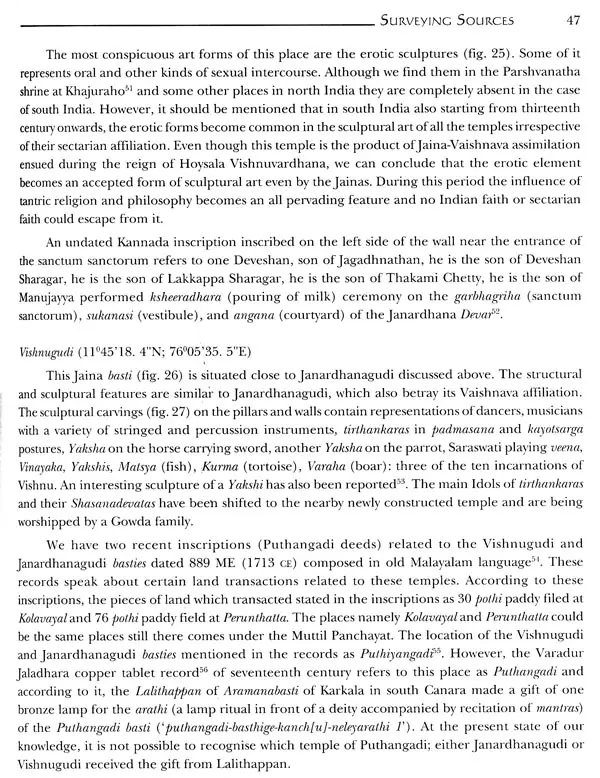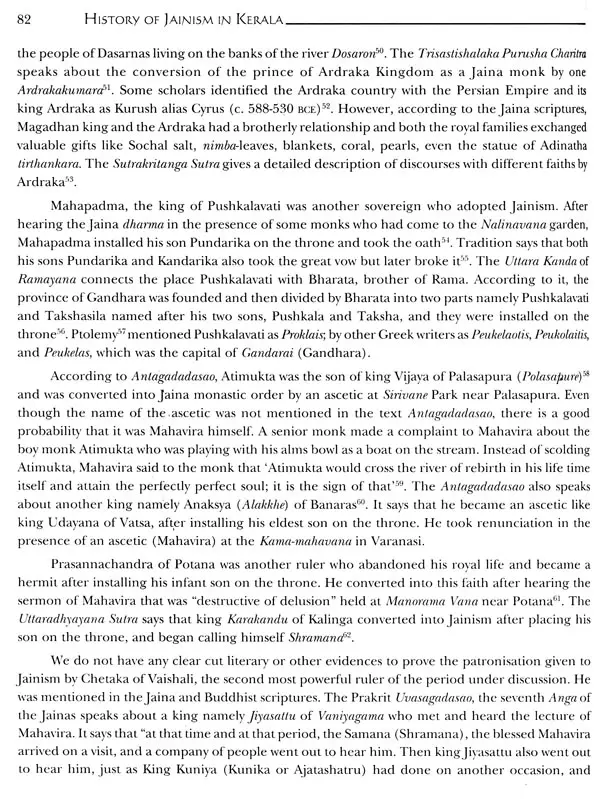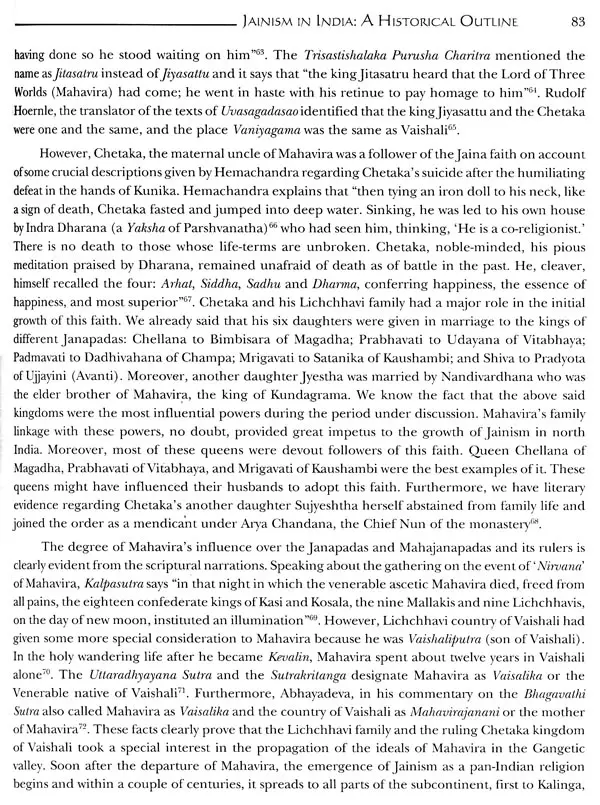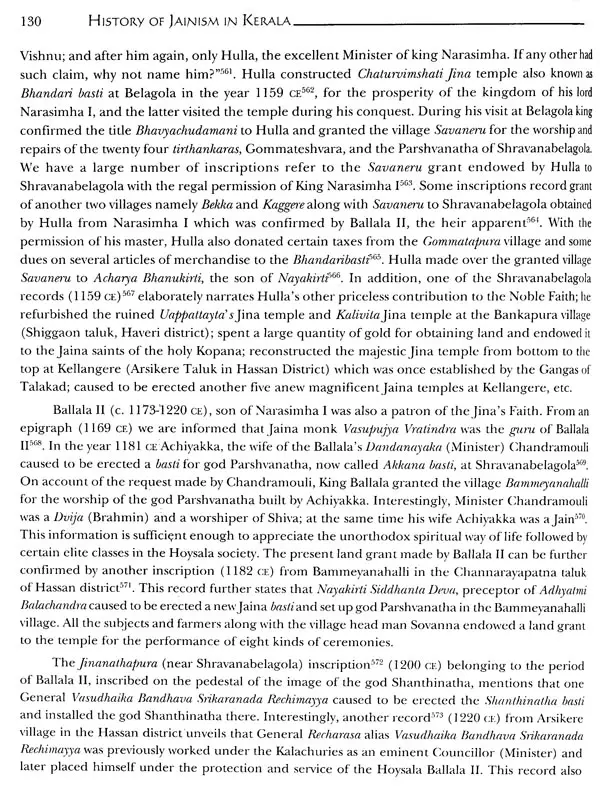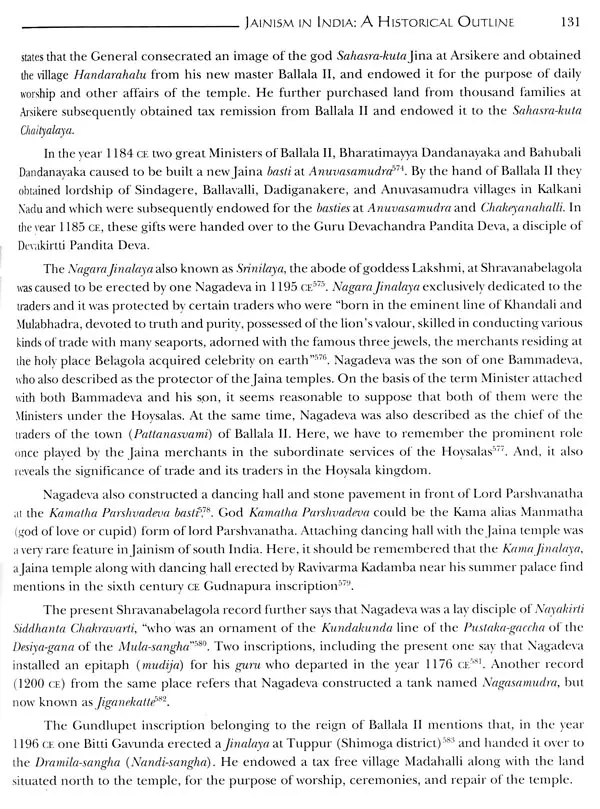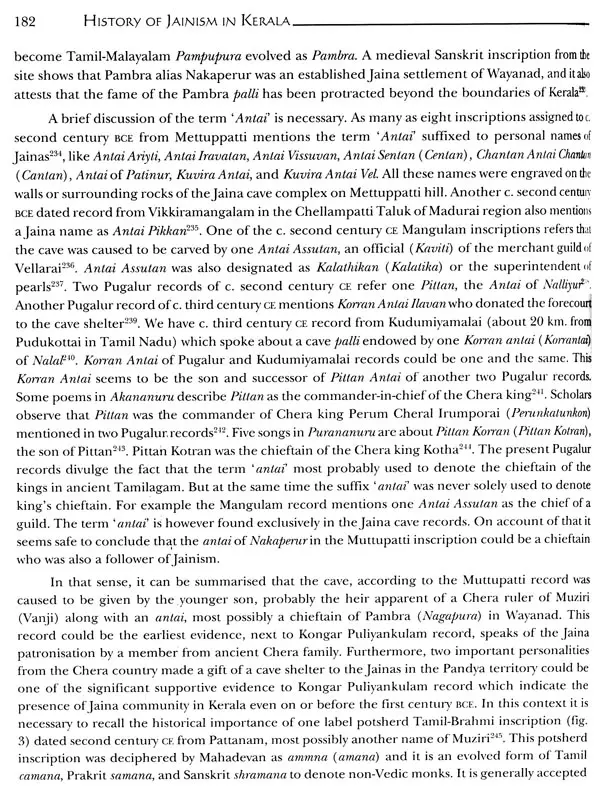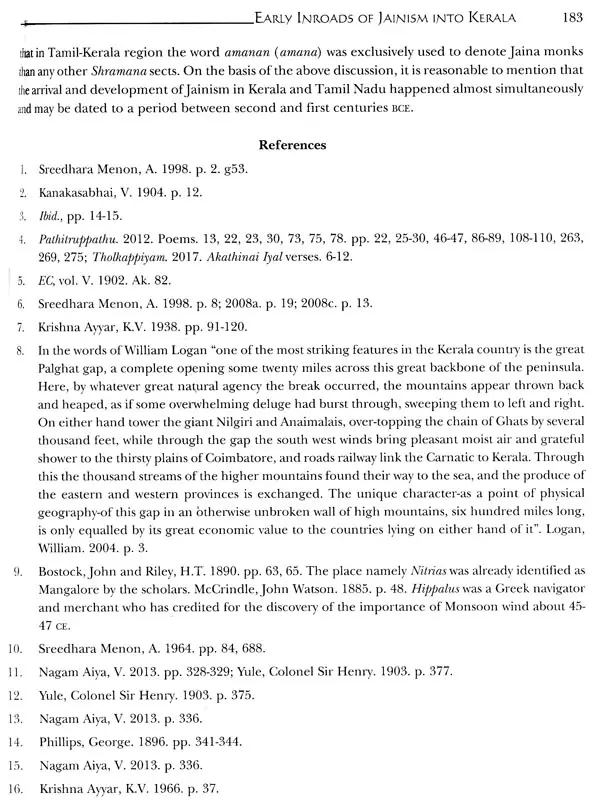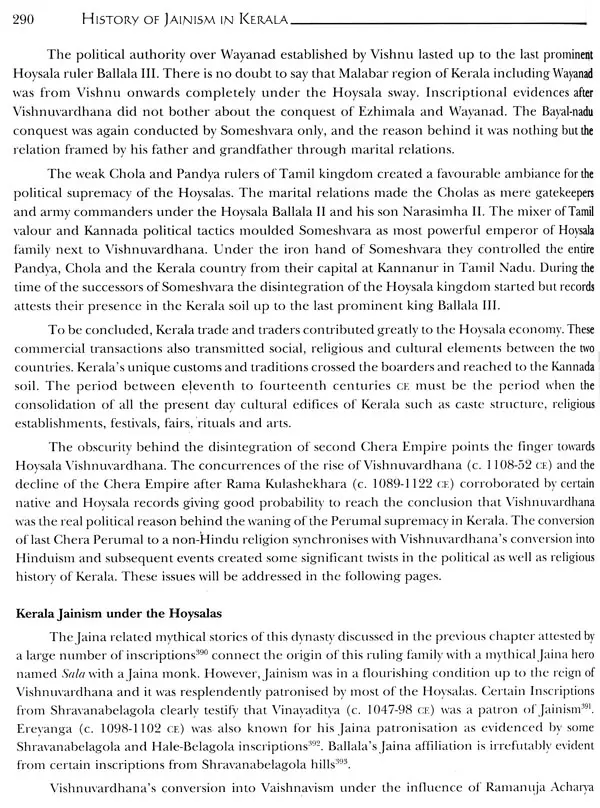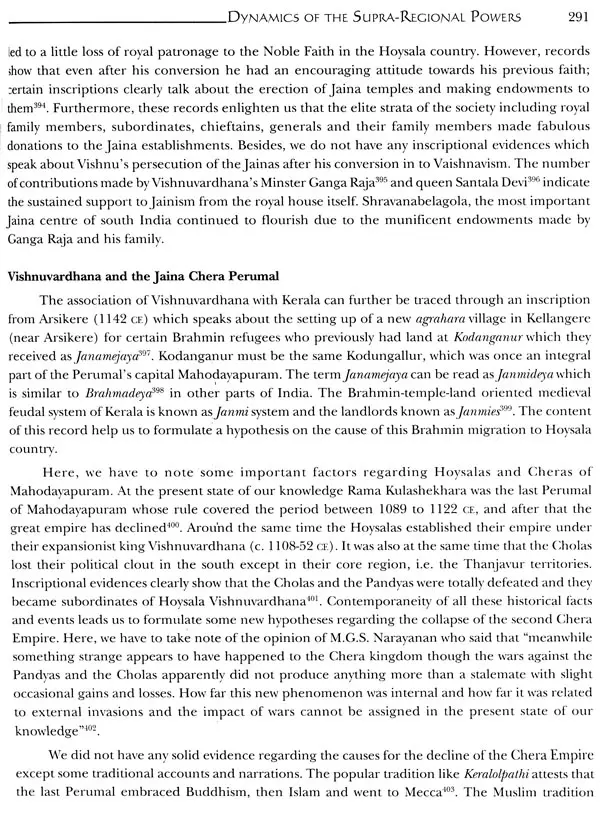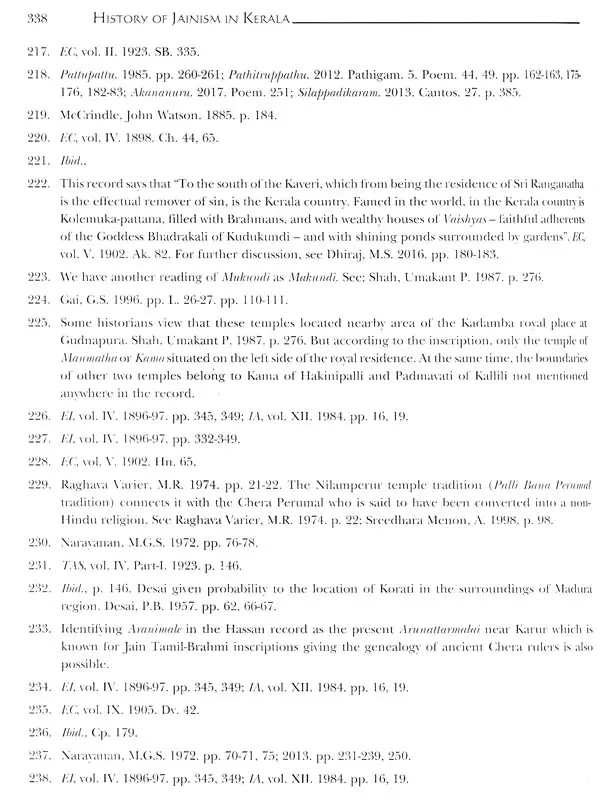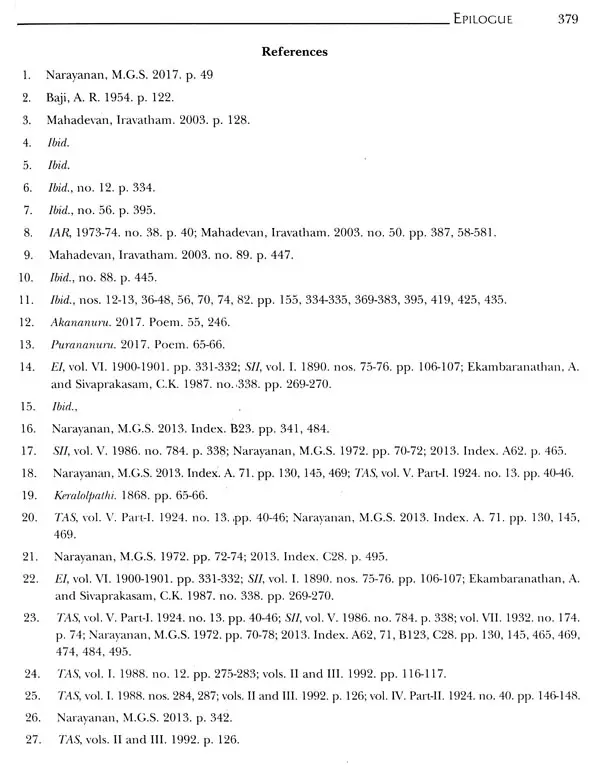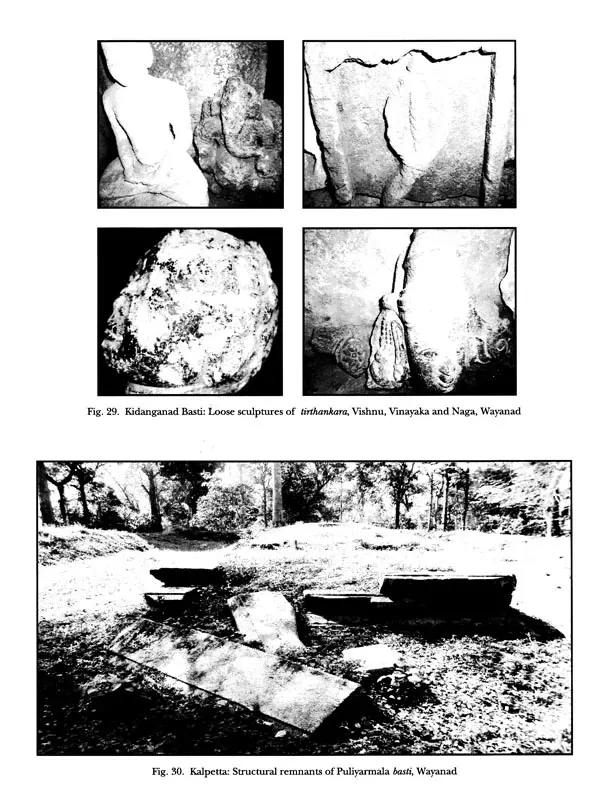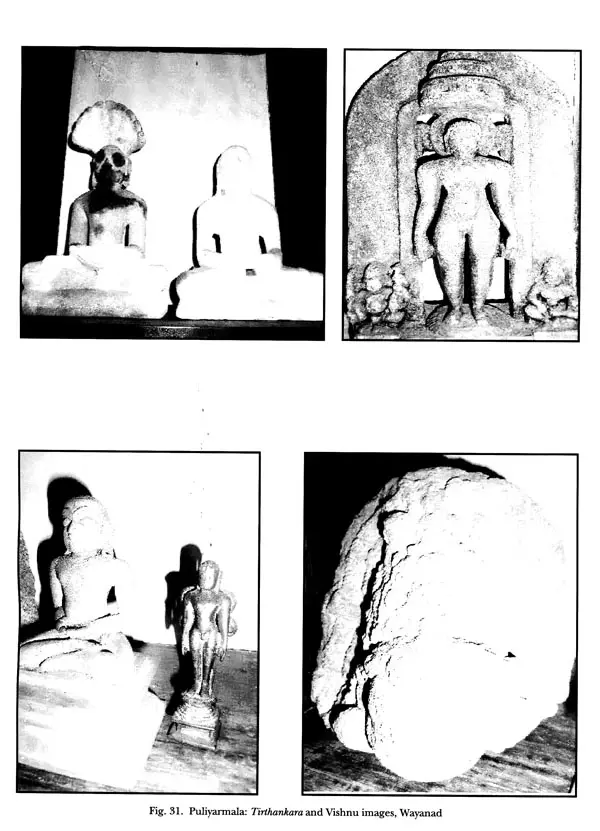
History of Jainism in Kerala
Book Specification
| Item Code: | UAE347 |
| Author: | M.S. Dhiraj |
| Publisher: | Sharada Publishing House, Delhi |
| Language: | English |
| Edition: | 2021 |
| ISBN: | 9789383221301 |
| Pages: | 452 (Throughout B/w Illustrations) |
| Cover: | HARDCOVER |
| Other Details | 11.00 X 9.00 inch |
| Weight | 1.48 kg |
Book Description
The present work is the result of an intensive investigation into the dark corners of the 'Faith of Lord Jaina' in the modern state of Kerala, extending over a period of about fifteen hundred years of ancient and medieval periods. This work also throws fresh light on some crucial political, economic and socio- cultural aspects of ancient and medieval Kerala and contiguous regions of south India. This study is mainly based on an impartial and comprehensive study and analysis of epigraphically evidences from the three linguistic regions of Peninsular India, viz. Kerala, Tamil Nadu and Karnataka, comprising transcripts of hundreds of inscriptions in Malayalam, Tamil, Kannada and Sanskrit languages.
After a thorough and critical analysis of the inscriptional sources, the author presented a history of Jain ism in Kerala with a new perspective in the most comprehensive manner possible.
The present book is" thus far, the most significant and' original research contribution to Jainism in Kerala; besides, it open up avenues for fresh academic investigations in political, economic and socio- cultural aspects of the History of Kerala in general.
Dr Dhiraj has 28 papers published in various international and national journals, edited volumes and conference proceedings to his credit; besides, he has presented 20 papers in various international and national seminars and conferences. His academic interests include jainology, archaeology, ancient and medieval political and cultural history.
Jainism is the oldest non-theistic religions of the world. The Pali word Jina literally mean 'the Victor' or 'the conqueror" or 'the liberator'; a person who himself became free from the bondage of karma through conquering of mega (attachment-deceit and greed), and dvesha (aversion-anger and ego). The basic ideas propounded by Mahavira were very simple, practical, ethical and thoroughly appropriate for the coherent existence of human social life. The ultimate objective of his teachings is to attain relief from the cycle of birth, life, pain, disease, old age, death and everlasting stat~ of being in one's self, which is nothing but the nirvana/ moksha or liberation/absolute freedom.
Mahavira accepted the existence of God. He believed that an individual soul can reach to the position of God because he has the innermost quality of godliness but most of the time it having downcast by the Karma sin. The destiny of the individual has to be decided by himself, whether it is good or bad. He should reap what he sows. Each good deed will bear its fruits; there is no escape from the effect of one's actions. Jainism is the only religion which gave absolute freedom to an individual to decide his fate.
Mahavira preached that from infinite past, all forms of life (soul), due to the lack of Jainism; organizational structure of the church; schisms in the church; royal patronage in the Genetic valley; spread of Jain ism in Odisha; arrival of early Jainas into peninsular India, particularly into the Kannada and Tamil regions like Shravanabelagola, Punnada (Southern Mysore), Chola and Pandya countries. The chapter also discussed the ancient Tamil Jaina literary tradition with a brief account of the Jaina affiliated Tamil-Brahmi and Vatteluttu inscriptions dated between e. second century BCE and c. sixth century CE; royal patronage enjoyed by the Jainas from the ruling dynasties of Karnataka and Tamil land especially, the Pallavas of Kanchi, Kadambas of Banavasi, Gangas of Talakad, Cholas of Thanjavur, Hoysalas of Dwarasamudra, etc.
The fourth chapter 'Early Inroads of Jainism in to Kerala', begins with a brief description of the land and physiographic of the state and discourses the epoch making early Inroads of Jain ism into the Kerala region which are synchronized with the Tamil and Kannada Jainism. This is followed by an elaborate account of the antiquity of Jainism in Kerala reconstructed on the basis of Tamil-Brahmi inscriptions of the period between e. second century BCE and e. fourth century CE; identification of ancient Kerala as a part of Punnada country and her Jain past as a part of Punnada Jainism; recognizing relation between the Jainas of Kerala and the Jainas of north- western part of India; the role of migrant traders in the spread of Jainism in Kerala; the role of trade centers and coastal towns in the emergence of Jain a settlements and spiritual establishments, etc. Through this chapter, the antiquity of Jainism in Kerala which hitherto was dated to 8th-9th century CE is now pushed back to the pre-Common Era, as also its expansion into this region almost simultaneous to its, spread in Tamil Nadu and Karnataka regions.
The fifth chapter 'Jainism under the Native Dynasties', dealt with the Jaina affiliation of the native dynasties, viz., the Athan line of ancient Cheras, the Later Cheras and the rulers of the Ay kingdom: It also proved the unassailable relation between ancient Cheras and their medieval cousins viz., the Perumals of Mahodayapuram. Some of the interesting topics of study in this chapter are interpretation of the Kinalur Inscription of King Vijayaraga Chera and Thiruvannur inscription of Rajaraja Chera; identification of Elini (Yavanika) mentioned in one inscription as the ancient Chera ruler Chenguttuvan and the Vidugadalagiya Perumal in the same record as the medieval Chera ruler who succeeded Rama Kulashekhara; Jaina affiliation of Rama Kulashekhara and the resultant disintegration of the empire, etc. The Tirukkunavay Ayiram mentioned in the Kollam pillar inscription is identified, for the first time, as the Ayiram shadow force of the Chera king Rama Kulashekhara. This Ayiram organization is proved to be the forerunner of the present Onnu Kure Ayiram Yogam (OKAY) of Kodungallur temple. On the basis of inscriptional analysis, the author identified the present Mathilakam near Thrissur as Thrikanamathilakam or Tirukkunauas from where Lingo Adigal authored his epic Silappadilwram.
Identification of the Ay king Vikramaditya Varaguna as a follower of Jain ism is another significant contribution of the book. The study of the Jaina association of the term 'Adigal'; study on the concept of 'bhattaraka'; probe into the Trikkakara problem, etc., are also path breaking contributions in the history of Jainism in Kerala.
The book is rarely, in fact never, the work of one individual. It is to a considerable extent the judicious imitation and adaptation of other people's ideas and thoughts, put within the framework of one's own critical analysis. I would like to thank all the people who contributed in some way or the other in completing this work.
Book's Contents and Sample Pages
